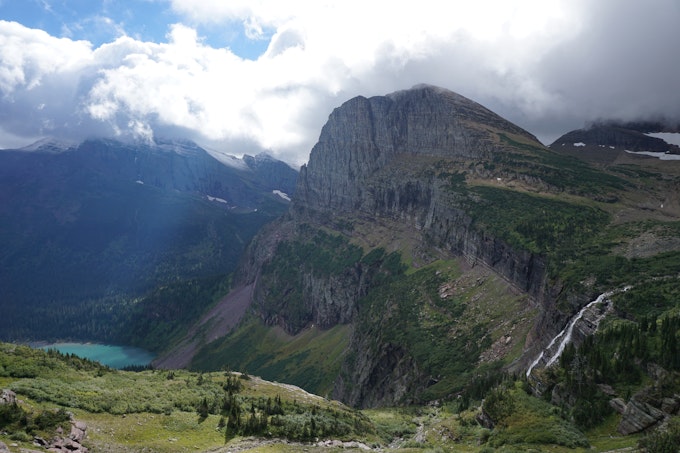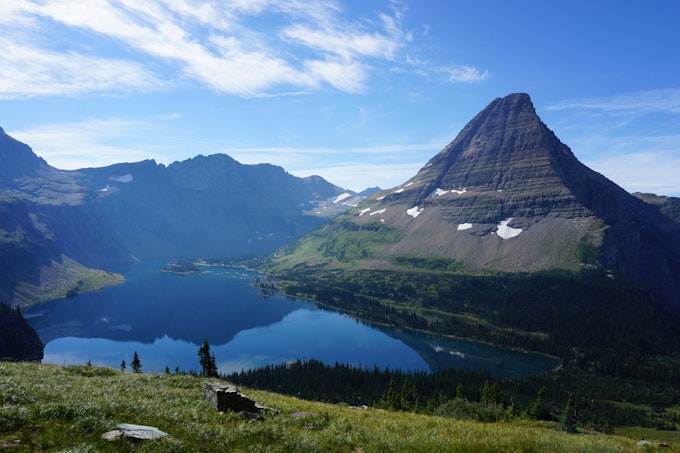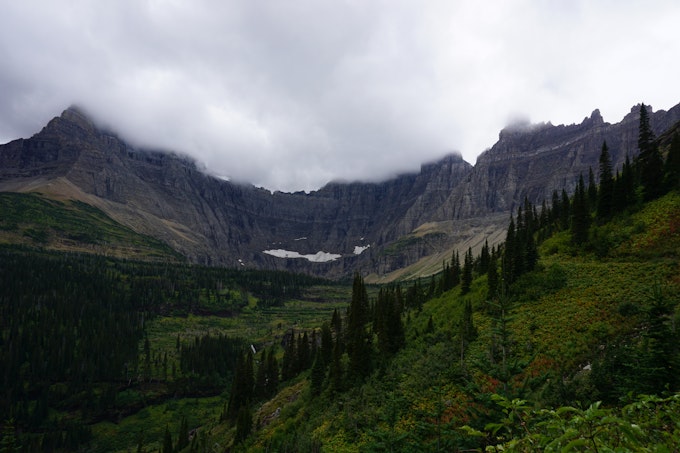5 Can't-Miss Adventures in Glacier National Park
"The mountains are calling and I must go".... couldn't have said it better myself! These adventures are simply awesome.

Located in upper west Montana lies one of the most beautiful and scenic locations on the planet, Glacier National Park, or as referred to by George Bird Grinnell "the Crown of the Continent." The park stretches over 1 million acres, including over 700 lakes, 25 glaciers, more than 1,000 different plant species, hundreds of animal species including 300+ grizzly bears, and over 700 miles of trails. All of which makes Glacier an ultimate hiking destination.
Glacier has four main entrances. St Mary and West Glacier serve as the east and west ends of the popular Going-to-the-Sun Road, while Many Glacier and Two Medicine are isolated road-accessible regions on the parks eastern boundary. While there are numerous other road and hiking entrances throughout the park offering a more isolated experience we unfortunately didn't have the time to visit them all.
We arrived at Glacier in late August 2016. While still busy, the crowds were starting to subdue. Glacier receives approx. 2.4 million visitors a year, with over 70% coming between June and August. As with most national parks, the best way to avoid crowds is to get up early, and/or hike a few miles along the many available trails.
With so much to see and explore, chances are, like us, you won’t be able to tick off your entire wish list in one visit. While we were lucky enough to spend a week within the park, splitting our stay at either end of the Going-to-the-Sun Road allowing us to see each of the main tourist regions within the park.
While there are simply far too many gems within Glacier to list them all, for those of you lucky enough to have more time available to explore the park, make sure you get to these 5 "can't-miss" attractions:
1. Going-to-the-Sun Road
Completed in 1932, the Going-to-the-Sun Road is Glacier's main attraction and the only road that traverses the park covering 50 miles crossing the continental divide, passing through Logan Pass at an elevation of 6,646 feet. Stephen Mather's (first National Park Service’s Director) foresight to choose a more expensive, less intrusive route reveals many of the park's most spectacular landscapes to motorists. If you are short on time, this is the one ‘must-do’ attractions providing epic, jaw-dropping views at every turn.
2. Grinnell Glacier Trail
Located in the Many Glacier region of the park, the Grinnell Glacier trail is a favorite of many and for very good reason! This trail has it all: remarkable mountain views, lakes and waterfalls, abundant wildlife, access to a glacier, all making for a challenging yet highly rewarding hike.
The hike is an 11 mile out and back starting from the trailhead near Many Glacier Hotel, or reduced to 7.6 miles if you take two shuttle boats across Swiftcurrent Lake and Lake Josephine starting out front of the Many Glacier Hotel (note there is a fee for shuttle boats). It’s of moderate difficulty with a total elevation gain of 1,840 feet.
Given the popularity of the hike, it’s best to start as early as possible. The Many Glacier area is very popular getting very busy throughout the day. While parking is better than other areas of the park, it can still be troublesome during peak periods.
3. Hidden Lake Trail
The Hidden Lake trail starts at the Logan Pass visitors center. If there is one area of the park you must beat the crowds, Logan Pass is it! Logan Pass is situated at the highest elevation point along the Going-to-the-Sun Road and has limited parking that regularly packs out by mid-morning. This also presents a good opportunity to utilize the park's shuttle service that runs along the Going-to-the-Sun Road, helping you to avoid crowds while also reducing congestion.
The trail can be broken down into two sections, firstly to the overlook (3 mile return), and secondly to the lake itself (total of 7 mile return). If you undertake the entire trail, you can expect moderate difficulty and 1,325 feet of elevation gain. Given the high elevation point weather conditions can also change rapidly, ensure you are adequately prepared for all conditions.
We strongly recommend completing the entire trail down to Hidden Lake, allowing for unbelievably beautiful views of the surrounding Bearhat, Reynolds, and Fusillade Mountains. It also allows the chance to cool off in Hidden Lake before taking the climb back up Clements Mountain on your way back.
4. Iceberg Lake Trail
Also located in the Many Glacier area the 9.7 mile roundtrip Iceberg trail starts near the Swiftcurrent Motor Inn. The moderately difficult trail has a 1,275 feet elevation gain offering fields of beargrass, impressive walls shaped by glacial carvings, high country hiking, floating icebergs and a high probability of crossing a grizzly bear!
The trail passes through prime bear habitat where sightings are highly common, meaning hikers should be sure to carry bear spray and make plenty of noise. Hiking in groups is recommended (more bear safety tips here). Iceberg, along with other trails in the Many Glacier area are often closed due to bear activity. It’s always a good idea to check the trail status with rangers before proceeding on any hike within the area.
In the shadows of Mount Wilbur and the Continental Divide, Iceberg Lake receives little sunlight, resulting in a slow melt after winter allowing for large icebergs floating throughout the lake. Timing of icebergs can vary depending on the season, however sometimes icebergs can still be seen into September.
5. Avalanche Lake Trail
Rounding out the ‘can't-miss’ list with only 5 attractions is tough given the many high quality options available, yet offering an easier hike again with high rewards is the Avalanche Lake Trail. Located near Lake McDonald, the Avalanche Lake Trail is an easy 4.5 mile return trip with a 730 feet elevation gain.
The hike begins at the Trail of the Cedars trailhead which is a popular 1 mile boardwalk walk passing through a forest of ancient western hemlocks and red cedars. After just over 2 miles, hikers reach the foot of Avalanche Lake offering majestic views towards the 8,694 foot Bearhat Mountain, rising nearly 5,000 feet above Avalanche Lake, displaying numerous waterfalls making their way into the lake hundreds of feet below. During our adventure, we were lucky enough to spot two bears by the lakeside taking a dip and searching for food on the other side of the lake. Yet another friendly reminder that Glacier is home to many bears and hikers should always be aware.
It’s difficult to stop the list here as there are so many more fantastic areas to explore. Two Medicine which was once the main tourist destination before the Going-to-the-Sun Road was constructed is now somewhat off the beaten path and an outstanding destination offering memorable hiking and water activities. The Highline Trail is another favorite to many visitors of the park offering countless miles of dramatic mountain views and spectacular glacial geology.
Hopefully this tiny fraction of what Glacier National Park has to offer hopefully gives you an insight into just how amazingly beautiful it is and inspires you to check it out before the last of the glaciers eventually disappear (estimated they will all be gone by 2030).
We want to acknowledge and thank the past, present, and future generations of all Native Nations and Indigenous Peoples whose ancestral lands we travel, explore, and play on. Always practice Leave No Trace ethics on your adventures and follow local regulations. Please explore responsibly!
Do you love the outdoors?
Yep, us too. That's why we send you the best local adventures, stories, and expert advice, right to your inbox.













